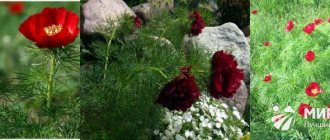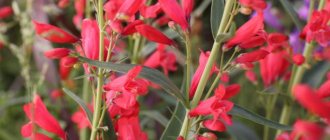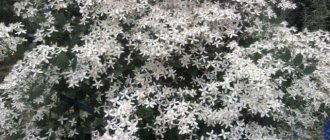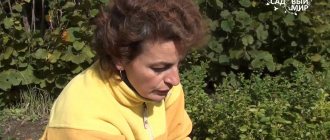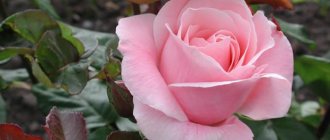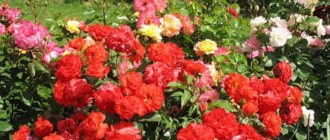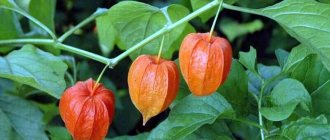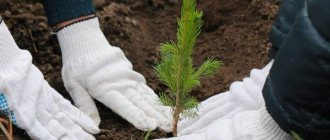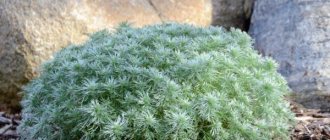Briefly about culture
Basil is a herbaceous perennial plant from the Ranunculaceae family. Various studies have found that there are from 120 to 200 varieties of it, but the exact number has not been determined. Even in Ancient Rus', some species were used for medicinal purposes. And today it is also used to create bouquets.
Delaway's Basil
Medicinal properties of cornflower herb
The rich chemical composition of cornflower allows the plant to be used in folk and traditional medicine. The pharmaceutical industry produces alcohol tinctures containing extracts from the plant; folk recipes recommend decoctions and infusions. The medicinal properties of cornflower are due to the presence of:
- lithium – a substance that helps relieve emotional stress by stabilizing the excited state of the nervous system;
- talmin, which allows you to lower blood pressure;
- berberine, which eliminates cramps by relaxing smooth muscles.
Basil-based products have the following properties:
- diuretics;
- bactericidal;
- antitumor;
- laxatives;
- anti-inflammatory.
In folk medicine, the plant is used as a wound healing agent. The decoction promotes tissue regeneration and stops the proliferation of bacteria.
Attention! The culture is a poisonous plant.
The medicinal properties of cornflower appear when the dosage is observed; if there are contraindications, it is better to refuse to use the plant.
Do not use for bradycardia, hypotension, constipation. It is not recommended to give basil medicine to children and pregnant women.
Description of the variety
Basil: planting and care
The most striking representative of the plant is considered to be the Delavaya Basil. This is a tall plant that reaches a height of 150-200 cm. It has paniculate inflorescences of a lilac-lilac hue. China is considered the homeland. Flowering lasts throughout the summer. The most popular varieties of this variety are:
- Hinckley (deep green leaves, purple stems and lilac flowers);
- Album (white flowers);
- Basil Delavayi Hewitt s Double (flowers from pink to purple).
“Relatives” of Basilistnik
Basil is a decorative flower with delicate inflorescences of various shades. Its types differ in the height of the sprouts, the color scheme of the inflorescences, and the region of growth. When creating compositions on your own plot, next to Delaway's Basilfoil, you can plant other varieties of this perennial.
The most common types.
- Aquifolia - a peduncle up to 150 centimeters, small spherical inflorescences of white and light purple hue are concentrated on it. Petals are missing. Flowering lasts for a month, beginning at the end of June. If the plant is planted in a shaded area, flowering lasts longer. The aroma and color of the inflorescences attract insects. After flowering, seeds are formed, which, falling into the ground, germinate. The leaves are large, triangular in shape. Place of growth - forest glades of the Eurasian continent. Characterized by unpretentiousness.
Aquifolia
- Twisted - growing places in Russia are Siberia, Primorye and the Far East. Spotted in mixed forests, in clearings, among bushes. A tall plant with dense oval leaves, dissected into teeth along the edge. The inflorescences are presented in the form of stamens up to 2 centimeters in length. The flowers are white with a purple tint. Flowering begins in June and lasts up to 30 days. Organic compounds (alkaloids) were identified in the rhizome. The above-ground part of the culture contains flavonoid compounds, which give color to the tissues. The pharmacological properties of the flower have been poorly studied by scientists.
- Fendler's - the plant is widespread in America, the ground part grows up to 2 meters. The leaves are green, pinnate. Inflorescences are light yellow.
- Reniform - a plant with large flowers and dissected leaves.
- Filamentous - grows in forests of the Primorsky Territory. The plant is not tall, but grows, forming arrays of light inflorescences.
Threaded Vasilitsnik
- Alpine is a frost-resistant low-growing crop that grows in the Tundra and highlands of northern latitudes. The inflorescences consist of small flowers of a reddish hue.
- Stinky is a low-growing perennial bush with an unpleasant odor. Small rounded leaves have a dark blue tint. It grows in rocky soil on the slopes of the Ural Mountains. Inflorescences are purple. Propagated by seeds and by dividing the root.
- False-petalled is a drought-resistant crop that grows on rocky, infertile soils of mountain and steppe regions. The plant is low, weakly leafy. The leaves are wide, concentrated at the base of the stem. The inflorescences are light, pinkish in color, collected in a thick bunch. The fruits are egg-shaped with a small curved nose. It blooms throughout the month, starting in May.
False-petalled Basil
Delaveya basilisk: planting and care
Buzulnik Przhevalsky: description, planting and care
For planting, you can purchase a plant from a nursery. In spring, seedlings are sold in containers with soil. This method is considered the easiest. But it is also possible to plant it after dividing the bush in autumn. It can be stored for 2-3 months in the refrigerator on the bottom shelf to slow down earlier awakening. A plant on which the buds have begun to swell should be planted in a pot. But in this case it is not necessary to keep the basil at room temperature. It is enough for it to be about 12 °C. However, it also requires moderate watering and good lighting. Transplantation of cornflower into open ground conditions is carried out in early spring or at the end of August.
For your information! Sowing of cornflower seeds begins in the fall, and seedlings will appear in early spring. In mid-summer, thinning is carried out, and the next season they can be planted in a permanent place. Planting in protected soil is also possible in the spring, but the seeds require stratification.
About planting a plant
In southern regions with sweltering solar heat, Basil is planted together with tall crops that shade the bush during the daytime. You can plant Basilisk near a fence or wall of a building. Crushed remains of dry grass and rotted plant residues are used in the form of bedding and mulching material.
To preserve moisture, the root zone is cultivated (loosening) to a shallow depth and enriched with organic fertilizers. The planting pit is prepared in advance - it has a round shape. In areas with depleted soil, drainage material from fragments of broken bricks and gravel is laid on the bottom, and a layer of fertile soil is covered.
You can plant Basilfoil near a wall or fence - this can provide shade, and besides, such plantings look very beautiful
Important ! The culture from the container is placed in the hole and fertile soil is added. Watering is carried out with a solution containing a rooting agent.
For fertile areas, the size of the hole should be slightly larger than the volume of the root system (volume of the container). When planting in heavy soil, the pit is prepared 30 centimeters larger than the volume of the container block. For rocky soils, prepare a hole significantly larger than the size of the root system. It is also necessary to prepare a place for the placement of roots and development during the growing season, so they build an “underground container” and fill it with a fertile mixture with organic elements. Thanks to this, the Basil will actively develop and bloom luxuriantly.
In regions with a frosty climate, the soil freezes deeply, and in the spring water can accumulate near the root system. The soil becomes waterlogged, but the planting hole cannot be deepened - it is better to widen it. The root system of the crop will be located in the surface layer, which will warm up earlier.
Important ! Seedlings are planted in the spring, since during the warm season the flower will take root and will more easily withstand the first autumn frosts.
It is worth preparing a hole in advance for planting such a plant, laying a drainage layer on its bottom
Further care
Chilean Gravilat: description, planting and care
This plant is considered an unpretentious inhabitant of gardens, but it is impossible not to care for it at all. For full flowering, the following work will be required:
- Watering. Moisture is required by young plants, as well as by those basil plants that are planted in direct sunlight. The rest are watered only in hot weather.
- Fertilizer application. For the first 3 years after planting, basil plants do not require feeding. In the subsequent ones, organic (autumn) and complex mineral fertilizers (during the flowering period) are applied.
- Weeding and loosening. It is carried out as needed. This is more relevant for young plants.
- Mulching is carried out to prevent excessive evaporation of moisture from the soil, and also prevents the appearance of weeds. It is advisable to carry out this procedure during preparation for winter.
- Trimming. This is done after the basil flower has completely faded. Its entire above-ground part is completely removed.
Basil in landscape design
Perennial basil is used in the landscape in a wide variety of compositions. The plant looks good:
- in group flower beds and mixborders;
Basil goes well with moisture-loving perennials
- in hedges;
Basil does not form a dense green fence, but helps to divide the garden into zones
- in alpine hills and rockeries;
Basil helps to decorate wastelands and slopes
The perennial successfully coexists with yarrow, astilbe, loosestrife, irises and other crops. But it is advisable to place it at a distance of 1-1.5 m from other plants, so that the cornflower does not have to fight for moisture.
Diseases and pests
Hewittї's Double Basil is generally not susceptible to pests or disease. But under certain conditions, it can become infected with powdery mildew. The first sign that the plant is affected is the appearance of whitish spots on the leaves, and the stems take on a black tint. Then yellowing of the foliage occurs, starting from the lower tiers. Already at the beginning of the disease, the plant should be treated with a ready-made topaz preparation. To prevent the disease, it is recommended to carry out preventive measures.
Generally not affected by pests
If there is a lack of moisture in the soil, the basilisk may be damaged by aphids or bronco. To combat them, insecticides are used: akarin, karbofos, biotlin or bankol. Treatment is carried out not only on the stems and leaves of the plant, but also on the soil next to them.
Popular questions from gardeners
Question : I purchased a copy of Delaway's Basilfoil. What are the growing conditions? How does it winter?
Answer : The plant is unpretentious and tolerates the first frosts well. Prefers shaded places. In open sunny areas, the leaves of the plant often turn yellow, and in a completely shaded area, flowering is sparse. Can be planted in open sunny places, but shaded with larger tall crops. In the first years of growth, young shoots (bushes) are covered for the period of the first frosts; subsequently, the snow cover acts as insulation.
Question : Delaway's basil developed well, but this year blackness appeared on the stems and the lower leaves turned yellow. What disease has affected the culture and how to fight it?
Answer : The stems have turned black and the leaves have turned yellow - the first sign of powdery mildew. Later, white spots may appear on the leaves. Prevention is carried out by treatment with Topaz. It is also necessary to inspect the crop: perhaps pests (aphids, mites) have damaged the leaves and stem. This plant is treated with disinfectants.
It is, of course, better to prevent various diseases, as well as the appearance of pests, with the onset of warm weather.
Question : How does botrytis manifest itself? How to fight?
Answer : Botrytis is diagnosed by the color of the leaves: they turn yellow. Young shoots wither. The disease can be accurately determined by a specialist plant pathologist. The plant is destroyed and burned, and the soil must be disinfected.
Reproduction methods
Three methods can be used to propagate a plant:
- Planting seeds.
- Dividing the bush
- Cuttings.
To choose the best option, you should study the features of each of them.
Planting seeds
The most labor-intensive and time-consuming method. To do this, it is necessary to collect planting material during the fall. Since the seeds ripen in August, the inflorescences should be tied with gauze at the end of July. This will prevent them from falling apart.
Seeds should be planted in early spring, after drying them and stratifying them. Plants planted in this way will begin to bloom only in the second year, losing the characteristics of a particular variety.
Cuttings
The simplest method of divorcing Basil. To implement it in the spring, you should cut off a shoot or part of the rhizome, leaving the heel. Before planting, the cuttings must be soaked in a growth stimulator.
For planting, select a semi-shaded place with loose soil. The young seedling is covered with a plastic bottle, or a mini-greenhouse is built from film.
To avoid rotting, the plant must be given daily air baths lasting at least 30 minutes.
Dividing the bush
Propagation by division is carried out as follows: in early spring, you need to dig up a bush, divide it into several so that each of them has at least two buds. Planting is carried out in a shaded place, followed by mulching, loosening and regular watering.
When choosing Basil to decorate your garden plot, you can create unusual compositions by planting them both in groups and in rows along the border. Unusual compositions are obtained by combining bushes with irises, castor beans, euonymus, and phlox.
The plants are quite self-sufficient, so they look good alone. The correct choice of planting site and minimal timely care will allow you to get a fragrant bush on your site for many years.
Procurement of raw materials
Not all parts of the basil plant are used as raw materials. The root system, leaves and flowers are used to make medicines. The optimal time for harvesting is the period of full flowering. The tops of stems 30-35 cm long are used as raw materials.
Next, they are tied into bundles and placed indoors with free access of air or outdoors under a canopy.
After the drying process is completed, the workpieces should retain the green color, leaves, flowers and berries that were originally on the stem.
If the process of preparing raw materials was carried out in accordance with all the rules, then it will have a slightly bitter taste and a weak aroma. The collection of roots begins in early October, after which they are also completely dried. The prepared blanks are placed in dry containers and stored in ventilated areas for no more than three years.
Dried Basil
Basil flower: botanical description
The plant belongs to the Ranunculaceae family, a characteristic feature of which is erect stems with no foliage. The root system is creeping and has triangular basal openwork leaves. Depending on the variety, the crop can reach 2 m. Numerous miniature flowers are grouped into paniculate, racemose and corymbose inflorescences. They may be pink, white, greenish, lilac, yellow and cream in color. Due to this, basil leaves are often used for landscape design.
